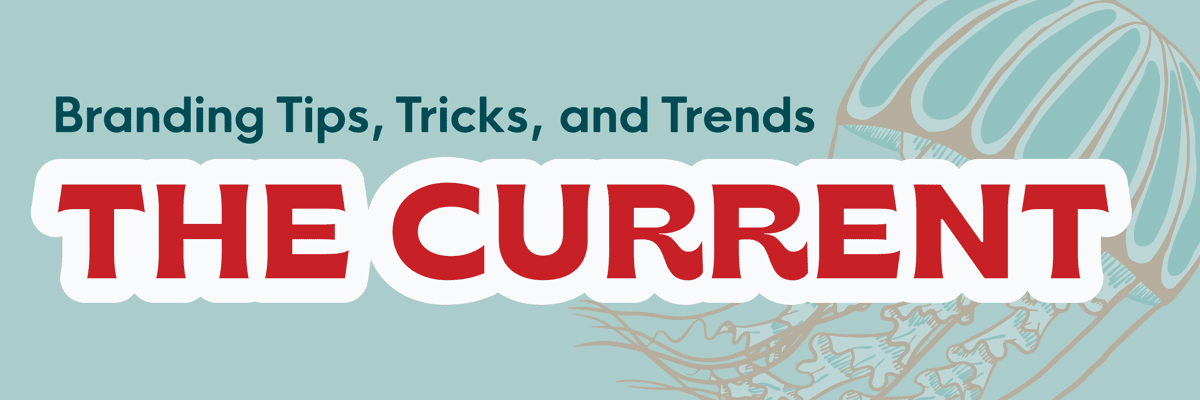When you think about your customers and how they interact with your product or service, what do you think of?
Are you thinking about your “target audience”? Are you thinking about the biggest representative slice of your audience pie? Are you thinking about your regulars and how they are using your product? If so, you might be missing the mark and here’s why.
I recently had the chance to sit down and meet with Stephen Wunderli from Novo Creative to talk about the creative processes of performing research, identifying unique value propositions, and forming a “big idea”, or as we call it at Big Red Jelly, the Guiding Idea. But first, let’s talk marketing:
Marketing Is Changing
“It’s a crazy industry, but it’s changed a lot. But it’s also improved a lot in the last ten years, at least. Creatively.”
That’s how Stephen starts our conversation. Getting right into the thick of it.
“Yeah. In what ways do you think?”
I reply.
“I think people are getting a little tired of just having stuff on YouTube or just counting numbers. They’re wanting stuff that’s more creative now. It’s an interesting time. We’ve been through that phase where everybody’s like, yeah, let’s measure everything with Facebook and Google and let’s find a lookalike. Let’s take all that scientific approach, which is great. That’s the one thing that were lacking in advertising. It was always just someone’s opinion, but in doing that, going to those diagnostics, we ended up losing the creative part. Now we’re coming back. There’s sort of a renaissance in creative, which was kind of cool to see in the know. There was some good stuff there that I thought was very creative and good, especially the state farm stuff with Schwarzenegger was like, just funny stuff.”
Anybody who knows me knows that I LOVE analytics. I went to school for public relations, but really gravitated towards the quantitive analysis of the performance of ads, and I’ll be first to admit that in doing so, I lose some of the magic of the creative aspects of advertising and marketing. (If you want to listen to a great short podcast where myself and Josh go into why branding is the new marketing, click here)
“How impactful are those immeasurables in the success of a campaign or the success of a brand? I wish we could measure the impact…”
I respond, trying to be ironic.
“And clients especially wish that. And it’s really hard because one of the most successful campaigns I ever saw, and I met the creative director that produced it. But you may remember the 1984 commercial by Apple, and it was only one spot. They only aired at one time, and it was during the Super bowl. And it’s this guy. I was really young in my career, but this guy comes running up this aisle of all these skinheads who are fixated on this big brother screen. It’s a woman. She heaves this sledgehammer through the screen, and it smashes. And then the only words were, see why 1984 won’t be like 1984? And then it came up Apple computers. So there’s a lot to be said about having a big idea. I just don’t see a lot of big ideas anymore.”
Even if that ad was before your time, if you’ve spent any time in marketing, advertising, or PR, you’ve probably seen it. Marketing changed. And during this evolution, we focused instead on quantity instead of lasting quality. Companies now know the equations for successful Google Ad campaigns and they know how to play the daily algorithms of organic social media. In efforts to keep up with those, internal marketing managers or social media managers have to crank out a new campaign at least monthly, sometimes even weekly. It almost reflects the same attitude we have towards our consumable products; we know it’s temporary so it’s not meant to be super high quality.
I continue,
“And there’s no more big ideas. I thought of the Motel 8 campaign. We’ll keep the light on for you. I think it’s the oldest running marketing or advertising campaign in the world. And it’s like, how awesome is that? That’s a big idea. That’s something that stays forever.”
Those big ideas are making a comeback. Marketing campaigns that aren’t marketing campaigns so much as they are permanent brand positioning.
Obsessing Over Your Audience
Going back to the original question; what comes to mind when you think about your customers? Here’s what we think it should be. It SHOULD be your loyalists, your tribe, advocates, fanatics, (insert your synonym here), etc.
As an agency, your client is the company contracting you out, but you have to break past that wall and get into the mind of “your” new client; your clients’ clients.
In Stephen’s experience,
“We had Easton sports, which was all mountain bikes, and then archery division, and then Hoyt, and then a whole bunch of camping stuff, which in those days was really awesome because there was three of us on the creative team, and so they sent us all the products that were working on. Our office was just full of tents and mountain bikes and bows and arrows and just all kinds of stuff. And that’s where I really learned that what you need to do in order to be a really good creative is get in the dirt with the product… We had to go figure out why people cared about this one arrow shaft versus another one, and what the whole mentality was. It was totally foreign to me. It’s like, why do you. I don’t want to go kill things. But they did. And actually, we found out it wasn’t even about that. We found out that they were really like gearheads, about micrograms and lengths and the types of materials. So it was interesting because it wasn’t about killing, it was about accuracy. They took this great pride and accuracy. And so that’s what we talked about.”
We see it ALL THE TIME on social media from sales coach influencers and marketing gurus. “Focus on the benefits”, “Sell the results”, “Sell the lifestyle”. But so often people aren’t in it for the “killing”, they’re in it because they love the product.
Stephen dives a little deeper:
“What people will pay for is really good thinking. Takes a little more time. But research is kind of misunderstood. Most people understand that research can say whatever you want it to say. So you’ve got to be able to have the right head around research so that it comes back neutral. And then how you read it takes a lot of experience, and then how you interpret that research into what your big idea is. And so people talk about research all the time, but not very many people really know how to do it.”
It’s Hard Not To Project What You Want Onto Your Understand of Your Customers
Stephen starts with
“The classic example of this is Honda. Remember, they build that square Element car, that ugly car. They built that thing for the 20 something crowd. And what they found is 40 somethings were buying it who wanted to be 20 something. So they completely missed their mark.”
I respond,
“Projecting your understanding of a certain demographic onto your product. If you have a bunch of 40 year olds marketing and creating a product, thinking about what does a 20 year old want? The product you’re going to get is what a 40 year old thinks a 20 year old wants.”
“That’s exactly right. Projecting is a funny thing, too, because you can plan for it if you can identify it. I did a lot of work for jeep, and it was interesting. I. The research that came back from jeep was the reason people bought a jeep was because they wanted to be able to go anywhere that they could imagine, and 2% of them did. It’s really a funny statistic. Like, 10% of the people that buy jeep actually drive off road, but they want to be able to. So in their mind, that capability is there. You have to understand that mentality about every product. Why are they really buying it? Are they buying it for what it can do, or are they buying it for what they see themselves doing with it? I remember jeep had a failure of a campaign because they targeted moms, because that’s who was buying the jeep wagoneer was moms to haul their kids to school in. Well, as soon as they started advertising to moms about being the kid carrier, sales just plummeted, even though that’s exactly who was buying it. But even the moms felt like, yeah, if it’s a bad weather day, I still got to get my kids to school. So I want this rugged vehicle. But when you start saying, yeah, well, it is a rugged vehicle, but really it’s for taking your kids to school, they hated it. The moms hated it. That’s not why I’m buying it, even though it is why they were buying it.”
Are they buying it for what they see themselves doing with it?
I love that. When you think about your customer, think about what they see themselves doing with it. Even if that means that they aren’t actually or never actually do that thing. Are you buying a Jeep Wrangler because you see yourself climbing the red rocks of Moab, even though it’ll never leave the black-top of suburbia? And that is totally OKAY! You are buying a feeling, you are buying options, you’re buying the possibility.
I love these types of conversations. The industry is going through this “renaissance” back to BIG, LONG LASTING, IMPACTFUL ideas, but it’s making that comeback through branding and positioning. Obsess over your clients, resist the urge to project, and know that your product might sell because of what it represents or what your customers think it represents.







